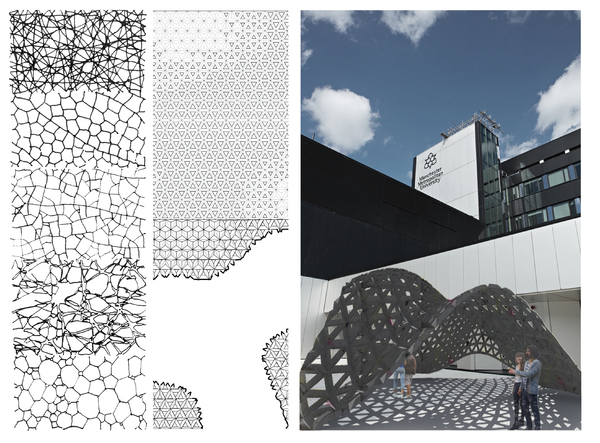The starting point for this year’s studio projects involved investigating the way natural forms created structure and geometry in terms of the atelier approach of ‘performative pattern’ and how these methods can be applied to architectural design on a range of scales, beginning with a small installation and progressing to a high-rise building. My approach to these projects considered elements of a structure as small components that interact in various ways to create a pattern that is responsive to given parameters.
Both projects aim to use performative pattern in their fabric to create interesting and pleasant spaces to experience and as a way of connecting nature to an urban context that would provide benefits socially and environmentally. This concept utilises computational methods to create organic and biomimetic forms that reflect the context they are in.
This process in terms of the pavilion involved using folding techniques to create three-dimensional triangular components that can be interlinked and with varying aperture sizes. This results in a dynamic form responding to the way the space is circulated and creates a gradient effect shadow pattern, connecting global morphology and local geometry with the environmental quality beneath.
The idea of triangulation, common in natural structures, translated into the structure and façade in the high-rise context. A timber diagrid system allowed the twisting form for public space, guiding the user through the programme. This pattern is reflected throughout the entire tower with a modular curtain wall façade to unite the geometry of public and private programmes present, whilst creating a distinctive addition to the emerging Manchester skyline.


